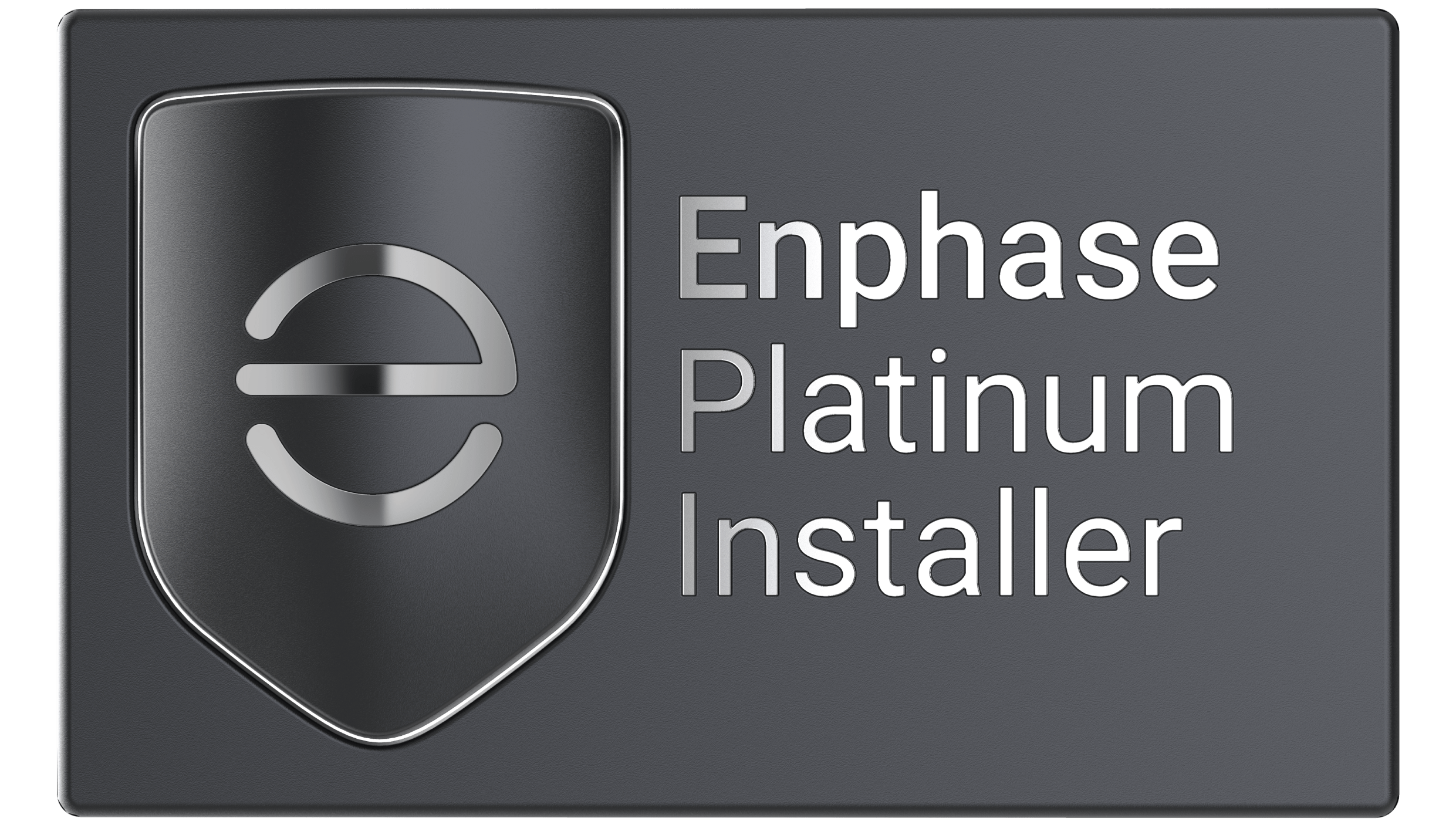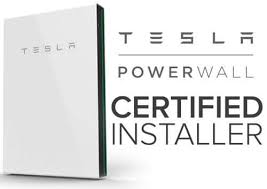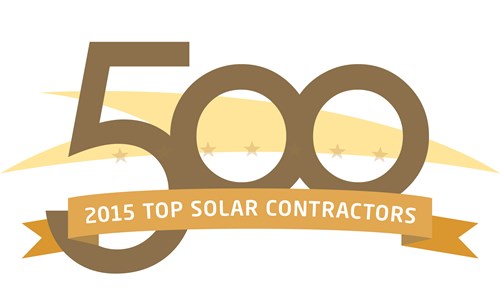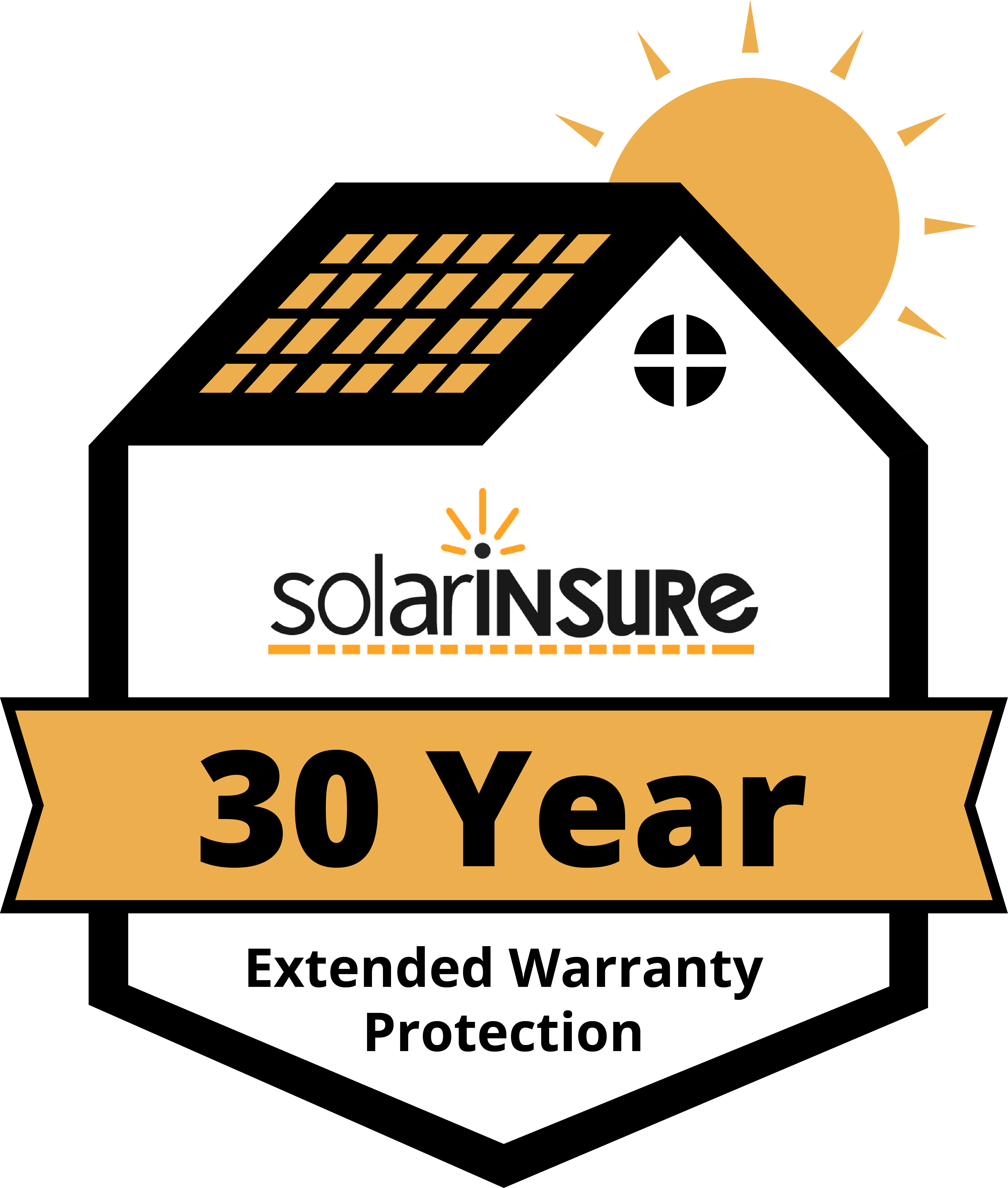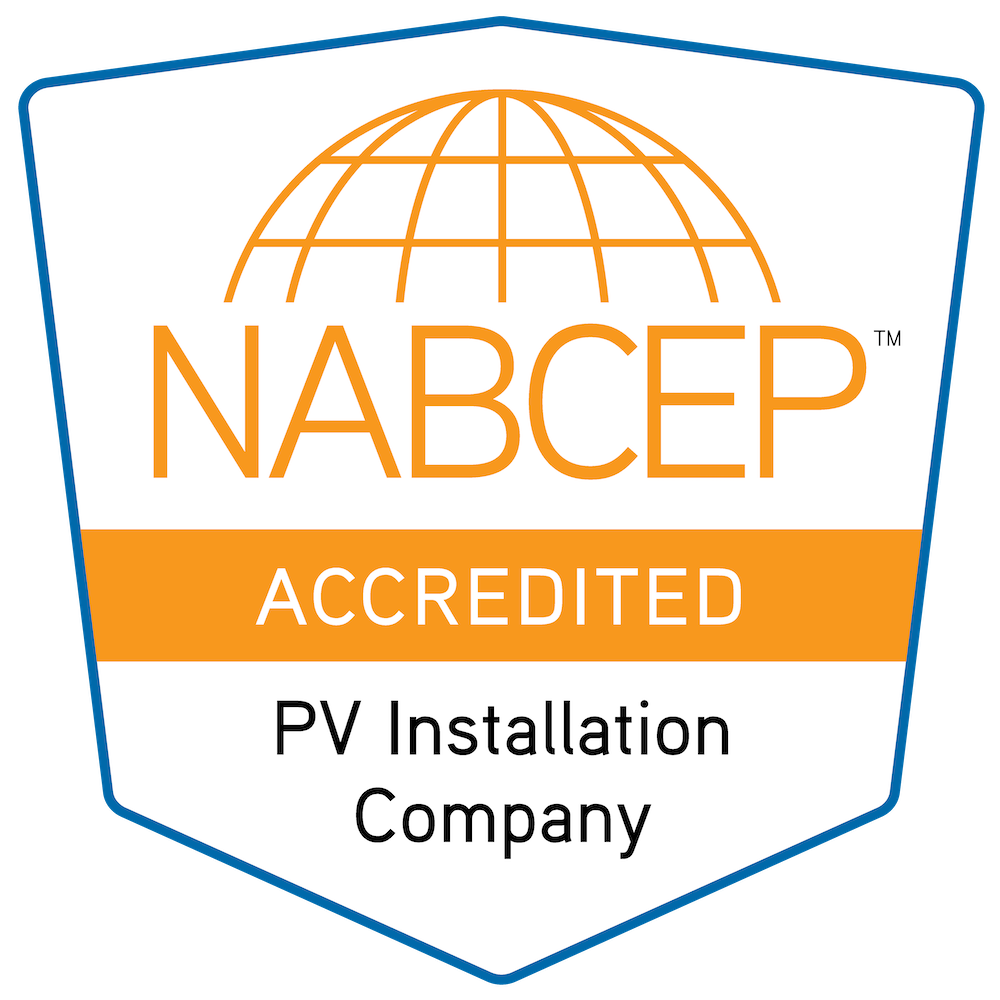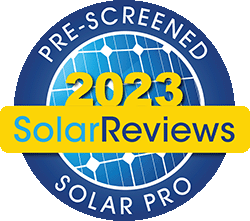Save 30% on your new PV system- here’s how!


The Investment Tax Credit, or ITC, is a 30% tax credit for residential clean energy improvements. The Energy Policy Act of 2005 states that a taxpayer may claim a credit or 30% of qualified expenditures for a system that serves as a dwelling unit located in the U.S. That is owned and used as a residence by the taxpayer. This is a credit to taxes owed, not a deduction to earnings. This is a dollar-for-dollar reduction in the federal income taxes a homeowner would otherwise pay to the IRS. The amount of the tax credit which can be utilized depends on the homeowner’s total tax liability. In the event that the amount of the tax credit exceeds liability for that year, the customer is able to carry-over the
credit to subsequent years. The tax credit is available on qualified installs before 2021.Line 63 of tax form 1040 will tell you what your total tax is, assuming you haven’t had a significant change in circumstance (new job, loss of a job, sale of a home). If you’re paying the amount of the tax credit in taxes, you can expect to receive that amount back in the form of an IRS refund. If you have questions, it’s always best to consult with your CPA, since everyone’s tax situation is different. If a person owes zero federal taxes on an annual basis, this tax credit will NOT be paid as a grant from the IRS.
What does “carry-over mean?”
In the event that your tax credit exceeds your tax liability, the credit will carry over to subsequent years, meaning you will get the remainder of the tax credit back in the form of a refund check for the next year(s). In most cases, homeowners are able to take advantage of the full tax credit the first year, but not always. Even if you can’t claim the full credit the first year, the economics are still strongly in your favor, considering the long-term savings solar will provide.
Examples:
Value of solar property: $40,000
IRS 30% tax credit: $12,000
- Scenario 1: Tax credit is equal to tax liability
- If the homeowner paid $1,000 per month in payroll taxes, and this is the tax liability, then the homeowner can expect a tax refund of $12,000.
- Scenario 2: Tax credit is less than tax liability
- If total tax liability is $18,000
- IRS tax credit $12,000
- Tax liability after solar $6,000
- Tax refund. $8,400
- Scenario 3: Tax credit is MORE than liability
- Total tax liability before solar: $5,000
- IRS tax credit: $12,000
- Tax liability: $0
- Carry-forward credit: $7,000
In this scenario, the taxpayer only owes $5,000 in taxes, but the tax credit exceeds the amount owed by $7,000. This credit can be claimed the following year, and will come back in the form of a refund, assuming that the taxpayer’s financial situation does not change. If the tax credit is more than your tax liability, it’s important to know this when arranging your financing. Typically, we finance the amount of the tax credit with a same-as-cash loan for either 12 or 18 months. This allows you to make no payments, while awaiting your tax refund. But if the loan amount exceeds the amount of the tax refund, you could find yourself in a bind, so it’s crucial that you know your tax liability before the financing is arranged.
Weather any storm outage with a reliable battery solution

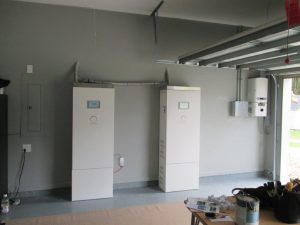 Did you know that your solar panel and wind-powered systems won’t work if the power goes out during rough weather conditions? That is, unless you have a backup battery.
Did you know that your solar panel and wind-powered systems won’t work if the power goes out during rough weather conditions? That is, unless you have a backup battery.
A solar photovoltaic (PV) system plus a lithium-ion battery backup bank plus an optional generator gives your family off-grid security when accidents, blackouts and natural disasters strike.
Battery systems provide improved energy security, and a custom design and installation meets your needs by providing the ideal power system. Now, new and existing PV customers can continue using their solar and wind-powered systems and keep the lights on when the grid goes down.
Florida consumers can now benefit from the sonnenBatterie, a smart and reliable energy storage system. The sonnenBatterie goes beyond backup power – it maximizes your solar use every day, thus saving you money and amplifying your investment in clean energy.
Benefits of the sonnenBatterie
[arve url=”https://www.youtube.com/watch?v=7HIIkOBo4t4″ align=”right”/]- Keeps solar modules producing power despite loss of grid power
- No annual maintenance
- Lasts 20 years
- No ventilation required
- Clean, all-in-one design
- Monitors energy usage
SonnenBatterie options include:
- Eco – The sonnenBatterie eco is an energy storage solution that utilizes intelligent energy management software. It is available in a variety of storage capacities and configurations, allowing for extensibility and expansion. It features a continuous output of 3,000–8,000 W with a usable capacity of 4–16 kWh (in 2-kWh increments).
- Pro – This is the new standard for reliable peak shaving for hotels, restaurants and office buildings of any size. The modular design makes it easy to size the system for any facility. This design features output with a peak of 30 kW (repeatable to 90 kW) and weighs approximately 370 lbs.
- Dimensions WxHxD: 28x55x25 inches
- Maximum efficiency of inverter: 96%
- Ambient temperatures: 41–95° F
- Enclosure rating: NEMA 12 AC
Customer feedback
“When the grid went down for four days, the sonnenBatterie eco 10 system in combination with my 10 kw solar panel system kept my power running and helped us comfortably weather Hurricane Hermine.” – Jim McBrayer
Top Ten Solar Myths…Busted

You’ve probably seen solar photovoltaic (PV) panels popping up on rooftops all over Northeast Florida, and wondered whether or not solar really works. There are a number of popular misconceptions about solar power, and often when we speak to prospective clients, they have heard some myths. Coal companies, oil companies, and utilities are more than happy to have their customers keep believing in these myths, and solar companies around the country are working hard to dispel these distortions.
A1A Solar Contracting is the leading solar contractor in our region, with hundreds of happy customers who have experienced first-hand that solar is a fantastic financial decision.
Myth 1: My HOA won’t allow solar
Homeowners associations can be a bit scary, for they do wield a great deal of power when it comes to modifying the exterior of your home. They can dictate the length of your grass, the colors you are allowed to use, and what trees you have in your yard. Furthermore, they can place a lien on your home and impose significant fines for non-compliance. For this reason, one of the first questions homeowners always ask is “what about my HOA?”
Homeowners associations are not legally allowed to prevent you from placing solar on your roof, and they know it. In fact, if they take legal action, by federal law, the HOA will be on the hook for your legal fees. The associations are typically very easy to work with when it comes to getting your solar project approved. A1A Solar will handle this process for you, working on your behalf to obtain the HOA letter. We typically avoid placing panels on the front of a home located within a community that has homeowners association; we will do so at the customer’s request, but only if it makes a significant difference in the system’s production.
Myth 2: Solar requires a great deal of upkeep and maintenance
PV solar is astonishingly easy to maintain, since there are no moving parts. Solar arrays are built to withstand extreme heat and weather, including hurricanes and hail. The only upkeep required is to keep the panels free of debris and dirt. Typically, once or twice a year, the panels should be cleaned. Pollen tends to be the biggest factor in our area, which will accumulate in the spring and decrease panel efficiency.
Cleaning takes almost no time, using a soft-bristle RV brush and a garden hose. If you don’t feel like bothering with the cleaning, you can always call A1A Solar, and we can put you on our cleaning schedule for a small fee.
Myth 3: Installation presents a big hassle
Our average install takes only about three days, from start to finish, including the necessary electrical work. We handle all of your permitting with the municipality, the utility company, and the HOA. We schedule our installations in advance, and will work around your schedule to make the install go smoothly.
Installs are hassle free, and our crews are all composed of A1A employees because we do not subcontract any work. This means that you can expect excellent customer service and professionalism at every phase of your installation, from your consultation with a sales representative, to your interactions with our office staff and engineers, to the hard working men and women who will put the panels on your roof.
Myth 4: The monthly payments are too high
As soon as your array comes online following your meter-swap, you will notice a huge reduction on your electric bill. This means that while you are making a solar payment, you are only paying a fraction of your previous electric bill. The more panels you have, the greater the percentage of your electricity you will offset with solar.
A solar investment is essentially revenue-neutral during the first seven years, meaning your solar payment is roughly the same as what you are already spending on your electric bill. And as utility rates continue to climb, during the last few years of your finance period, you will likely be paying less with solar. Of course, after your system is paid for, you can look forward to decades worth of electricity for free. Our motto is “why pay for energy, when sunshine is free?”
FPL announced a rate hike that will go into effect on January 1, 2017. By going solar, homeowners can essentially freeze inflation in place, avoiding paying more for electricity in the future.
Myth 5: Solar doesn’t work when it’s cloudy
As long as the sun is shining, your solar array is generating power, whether or not it’s cloudy, rainy, or even snowing. UV rays penetrate cloud cover, and hit the panels as long as the sun is up. However, during extensive cloudy days, your system will not harvest as much energy as it will on clear days.
Our engineers use advanced software which includes weather-prediction data for specific areas, and our projections take historic weather patterns into account.
Myth 6: Solar is too expensive
When you compare the cost of what you will spend over the next 25 years on electricity with the cost of your PV array, you will see that solar represents a huge financial swing in your favor. The average homeowner will save between $40,000 and $50,000 over the life of a system, and this doesn’t include the significant additional monetary value solar brings to homes.
Prices have dropped over the last decade, efficiencies have increased, and utility rates have gone up. As an investment in your future, solar is far ahead of the stock market, money market accounts, or savings. A typical first year annual percentage yield (APY) is around 7%.
With the 30% Solar Investment Tax Credit, the federal government essentially pays for almost one-third of the cost of your system.
The most important thing to remember is that you are already spending the money on electricity; it’s not an option. Solar allows you to redirect the money you will spend with your utility company and invest it in your home, rather than squandering it every month with nothing to show for it.
Myth 7: Solar doesn’t work at night
While it’s true that sunshine is the most important component of a solar array, we sell “grid-tied” systems. This means that during the daytime, after your home’s electric needs are met, you are making more power than you actually use. The utility company will then sell that excess electricity to your neighbors, crediting you for it. At night, when you are no longer making power, you will draw back from the grid.
This process is called net-metering, and being connected to the grid means that no battery systems are necessary, because the extra electricity does not need to be stored.
Myth 8: Solar means I will be off the grid
Because most of the systems we sell are “grid-tied,” if the grid goes down, your array goes down with it. This is a safety measure to ensure that if utility workers are out restoring power and working on lines, the excess power your array would generate does not shoot back to the grid and electrocute a lineman. In the event of a power outage, you will not have electricity, and there is an additional safety measure required by the utilities in the form of a manual automatic disconnect switch that we install near your electric meter to make sure that our workers are safe.
If you’d like to have the ability to maintain electricity even when the grid goes down, we offer solutions. We sell battery-back-up systems which store the excess power your array makes during the daytime, and which you can pull from at night. And if there is a power-outage, all of the extra power flows to your battery rather than the grid. During the night, you can draw from your battery, and power most of your home’s needs, with the exception of central air or heat.
We also offer generators which we can install and wire to work seamlessly in conjunction with your PV array and battery; generators are a more affordable option, and make sense for homeowners concerned about short outages during hurricanes, rather than a long-term outage that happens because of a cataclysmic event like war.
Myth 9: I should wait for better technology and price drops
Prices have bottomed out, after significant reductions over the last decade. Since 2009, prices have come down 70% according to National Geographic, spurred by the federal tax credit and an influx of panels manufactured overseas. (A1A uses panels made in the United States.)
Soft costs have remained stable, and steadily increased along with inflation: the cost of trucks, install crews, electricians, and overall operating expenses will never go down. While panel efficiencies continue to increase incrementally, the overall price-per watt is highly unlikely to go down significantly in the future. Part of the reason for this is that large corporations and utility companies are building huge large-scale arrays all around the world, reducing supply and increasing the demand for panels.
The technology used in solar panels is mature, and the technology itself has changed little since the 1960s. The materials used have evolved, and the efficiency of panels has gone up, but when comparing those increases with cost of waiting to install solar, the economics of going solar now far outweigh any benefit to be reaped by delaying. Solar works like an investment account, and the sooner you start to save, the more money you will save in the long run.
Myth 10: More people would have solar if it made sense
A common remark we hear from clients is “why doesn’t everyone have solar? It seems like a no- brainer.”
Solar is now exploding in North Florida, but we are still lagging behind the rest of the country when it comes to solar production. Despite the fact that Florida is number 4 for solar potential nationwide, we come in at 14 for overall harvest.
There are several reasons for this disparity, but the good news is that we’re gaining ground quickly, and as solar builds momentum, we’re seeing more and more of our neighbors with it.
One reason that more people don’t have solar is that for many years, the payback period was considerably longer than it is today. Now, we have many more financing options which make the payments completely affordable, and allow homeowners to go solar without any out of pocket expenses up front.
Another reason that more people don’t have solar… the myths just addressed in this article! Please help us spread the word that solar is good for the environment and also a great investment.
Solar City’s Florida expansion not surprising, likely calculated after Amendment 1

This morning, the AP reported that Solar City, the nation’s largest solar installer will open a Florida facility.
Orlando‘s and Jacksonville‘s A1A Solar – Florida’s largest rooftop residential solar panel installer – isn’t surprised:
“I’m glad there’s reputable competition coming to the Sunshine State. We’re not surprised at all that they watched Amendment 1 and waited for it to fail before making such a move. The Sunshine State is a very attractive state for rooftop solar, especially as local utilities were just granted the right to increase their rates.” — A1A Solar’s founder and CEO Pete Wilking, a combat veteran
Wilking’s correct. This announcement comes immediately following the Florida Public Service Commission approved an $811 million rate hike sought by Florida Power & Light. FPL has about 4.8 million Florida customers.
Editor’s Note: Pete Wilking is available for news interviews. Contact Pete at A1A Solar today at 904-239-2001 or 407-917-0975.
What do we want? SOLAR ROOFS! When do we want them? NOW!
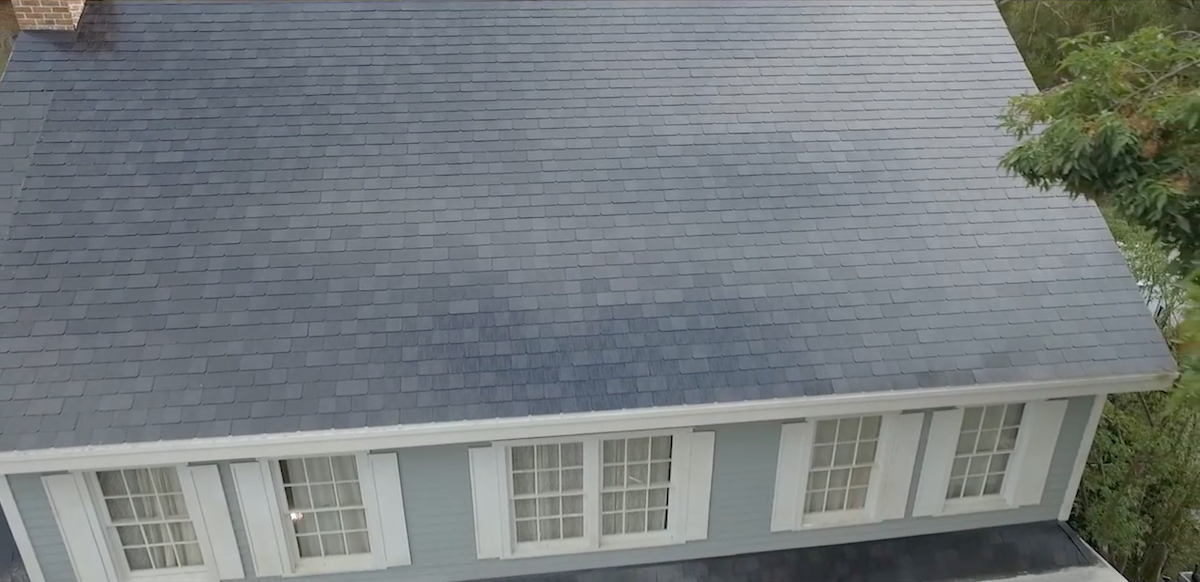

Last month, Tesla shareholders approved the two-billion dollar acquisition of Solar City, the nation’s largest player in the solar industry. Solar City will now operate as a wholly-owned subsidiary of Tesla. Following this acquisition, visionary entrepreneur Elon Musk rolled out two tantalizing surprises: Solar roofs, and the new Powerwall 2.0. What does this mean for Floridians who are making the switch to solar?
Solar Roofs
A1A Solar Contracting has partnered with Tesla as an authorized installer of its charging stations, and we are intrigued by these new product roll-outs. Clients are already inquiring about the solar roofs, and wondering whether they should wait to install traditional PV solar arrays, holding out for the new product line promised by Tesla. The answer is no, and here’s why.
Price
The solar roofs will be pricey. Despite initial claims from Musk that they will cost less than a traditional roof, according to Bloomberg, the solar shingles will cost twenty times more than asphalt shingles, without including the significant price of installation. There aren’t many roofers out there who will be savvy enough to handle the solar and electric components of the roofs.
Tesla anticipates that because the solar shingles weigh far less than traditional shingles, the decreased shipping cost will make their prices competitive with high-end roofing materials. So, if your roof is going to cost upwards of $70,000, then the economics start to make sense. The solar shingles come in four distinct styles: Tuscan Glass, Slate Glass, Textured Glass, and Smooth Glass.
The roof looks incredibly cool, but the price is definitely out of range for the average homeowner, who will invest roughly $12,000- $15,000 on a standard thirty-year roof. In today’s dollars, it is far more cost-effective for homeowners in Florida to install a new traditional roof and add a PV array.
Availability
Tesla predicts a “slow-rollout” at the end of 2017. This likely means that orders may start to ship in California and the Southwest, where Solar City maintains a robust presence. In our area, Solar City does not have an office, since this area does not offer some of the incentives for net- metering that other parts of the country do.
It’s highly unlikely, therefore, that the solar roofs will actually be available in North Florida anytime soon. In fact, unless either SolarCity decides to offer the shingles as a wholesale product or the shingles are otherwise manufactured for resale, no one except SolarCity will even have access to the product.
Potential changes to net-metering agreements
Another factor for homeowners to consider is that the utilities won’t give up on their long-term desire to thwart the growth of rooftop solar in Florida. A consumer who waits five years to install PV on their roof because they’re holding out for the sleek solar shingles my find that the economics have shifted by then, and that because the rate structure has been altered, the solar roofs aren’t nearly as appealing. Meanwhile, they will have missed out on saving thousands of dollars every year, and increasing the value of their home.
The bottom line is that while we embrace this new technology, it’s not ready in Florida yet and we really don’t see it becoming available anytime soon. It doesn’t make financial sense to delay getting PV in the hopes that the rollout comes to Northeast Florida within the next few years.
Powerwall 2.0
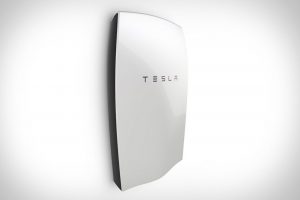
We were so excited with the announcement and anticipation of first version of the Tesla Powerwall, but definitely disappointed with the somewhat flawed end product. The upgraded version, however, appears to be much more robust, with 14 KWh of storage, and a surprisingly low price point. While the first Powerwall was not designed for grid- down scenarios, the newer lithium-ion battery will allow consumers to power most of their homes even when the grid goes down.
At A1A Solar, we look forward to working with Tesla to bring this new product to the market as it becomes available, and the Solar Edge inverters we use on the PV arrays we install are compatible with the Powerwall. The new batteries are slated for release in limited markets in early 2017.
The premium sonnenBatterie that A1A Solar offers now is flexible and powerful, and for consumers interested in the ability to maintain their lifestyle when the grid goes down, this product is unsurpassed, with over 12,000 installs in Europe, and a growing market here in the United States.
Overall, we are thrilled by these emerging technologies and the opportunities they will represent in the future for our clients over the coming decades. BUT….PV solar is a mature technology now, and there’s no reason to delay going solar now. You’ll start saving money as soon as your system comes online, and can look forward to a tremendous return on your investment for years to come.
Proposed JEA solar changes increase costs and threaten local jobs

JACKSONVILLE, Fla. (March 2, 2016) – JEA announced plans to generate its own solar power and charge its customers a premium for it. Meanwhile, the utility also intends to alter its net-metering policies, lowering consumers’ return on investment for rooftop solar.
JEA’s SolarSmart program, which modifies the utility’s current policy, implements changes at the expense of its customers, say some concerned citizens and local business owners.
If the JEA board approves SolarSmart, JEA customers would have the option to “go green” and purchase up to 100 percent of their electricity from utility-owned solar panels.
While that may sound good on the surface, consumers should understand the full impact of the changes – especially on their wallets.
SolarSmart increases the cost of energy for customers who opt into the program and it reduces the amount JEA pays businesses and homeowners who provide private solar power to JEA. The proposed SolarSmart plan would cost customers who opt for green energy more than JEA’s regular rate and, at the same time, would reduce JEA’s buyback rate for power it purchases back from private solar panels.
The payback reduction will essentially destroy the local rooftop solar energy market in Northeast Florida by rendering rooftop solar power non-economical. This comes just at a time when solar power has become a financially viable option for the average homeowner.
SolarSmart could also mean the end of local private solar jobs. One Northeast Florida company, A1A Solar Contracting Inc., which provides residential and commercial solar electric installations in Northeast Florida and Southeast Georgia, employs 50 people to service the demand for rooftop solar in Jacksonville. The proposed change threatens those jobs and others as customers stop finding solar energy a feasible renewable energy option in the area.
“With this proposed change, JEA is moving our community in the wrong direction for green energy,” said Pete Wilking, president of A1A Solar. “Renewable energy is the future,” Wilking said. “Jacksonville has an opportunity to define itself as a forward-thinking, vibrant community of tomorrow with its use of solar power.”
As one of the cleanest energy sources available, solar power is safer and greener than operating coal or nuclear power plants. The most successful and progressive rooftop solar markets, like Austin, Texas, and the state of Minnesota, uphold policies that encourage both municipal and privately owned solar with great success.
Opponents of JEA’s proposal, including A1A Solar, Florida Solar Energy Industries Association, Sierra Club, U.S. Green Building Council and others, are encouraging consumers to share their thoughts on this proposed plan. One way to do this is by attending the upcoming Community Forum on Solar in Florida. The USGBC will host the forum on Wednesday, March 9, from 6:30–8 p.m. at Jacksonville University’s Gooding Auditorium, 2800 University Blvd. N.
Vote NO on 1 in November!
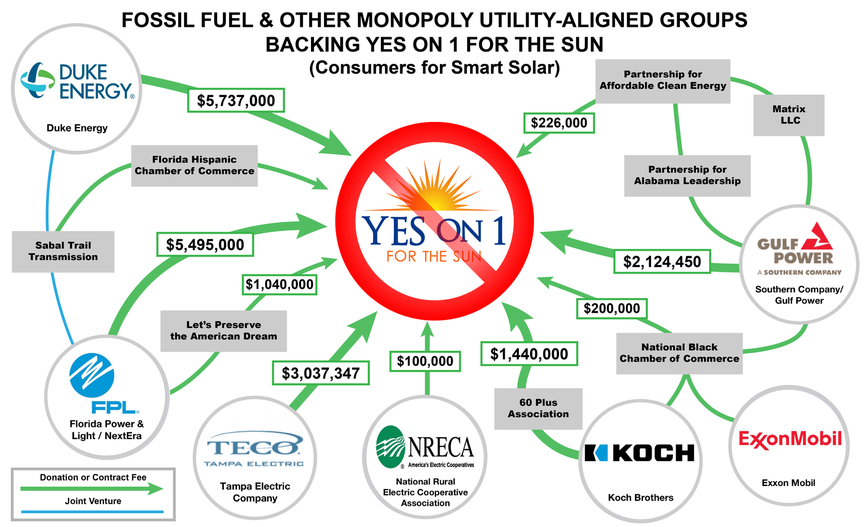

Don’t be mislead this election year! Follow the money, Amendment 1 was written by and paid for by the for profit, Big Energy utility companies and fossil fuel backers like Duke Energy, Florida Power & Light, and the Koch brothers.
VOTE NO ON 1
What’s the big deal with having an EC license anyway?

 We’ve had an amazing year this year, and would like to take a moment to tout our latest accomplishment! The latest in a string of victories, A1A is now a certified electrical contractor. This means that we are able to perform 100% of the work required to install your new solar array without sub-contracting any of the work. Unlike the vast majority of solar installers in our area, A1A Solar Contracting is both a certified electrical contractor and NABCEP certified!
We’ve had an amazing year this year, and would like to take a moment to tout our latest accomplishment! The latest in a string of victories, A1A is now a certified electrical contractor. This means that we are able to perform 100% of the work required to install your new solar array without sub-contracting any of the work. Unlike the vast majority of solar installers in our area, A1A Solar Contracting is both a certified electrical contractor and NABCEP certified!
Why this is important to you
Because we don’t have to use subcontractors, everyone who touches your home during your install will be an A1A Solar Contracting employee. We hear horror stories from clients who elected to use other companies, and who later turn to us when the project goes sideways and they have issues that need fixing. We hear about faulty electrical work, leaking roofs, prolonged installs, and job-sites littered with cigarette-butts and profanity.
With A1A Solar Contracting, you will have a positive experience with our friendly, highly trained crews during your installation. Our employees are all rigorously vetted and adhere to the high standards of professional responsibility that owner Pete Wilking expects from everyone who wears the A1A shirt.
We are the only solar contactor in the region that’s able to boast an electrical contractor’s license. Not only does this elevate the level of professionalism we provide to our clients, it also eliminates the risk posed by sub-contractors when issues arise. We hear about companies that go out of business, and clients are left without recourse. With A1A Solar Contracting, that has never been, nor will ever be an issue. This means peace of mind for our clients. Solar is a long-term investment, and in many ways a partnership between the homeowner and the contractor. It’s vital to know that the company you are doing business with subscribes to the highest ethics and delivers excellence both during your install and in the ensuing years.
A Company on the Move!
- Jacksonville Business Journal’s 50 fastest growing businesses
- 2016 Veteran-Owned Small Business Person of the Year for the state of Florida (Small Business Development Center)
- AIFBY Chamber of Commerce Green Business of the Year 2013 & 2015
- 2016 Best Places to Work, Jacksonville Business Journal
- 78 out of 5 stars on Solar Reviews (www.solarreviews.com)
- 2016 New office open in Orlando
- Better Business Bureau Acredited Business (A+ Rating)
- Region’s only certified solar company and electrical contractor
- Serving large-scale commercial, government, and residential clients
Here’s How You Can Support Solar this Election Year!
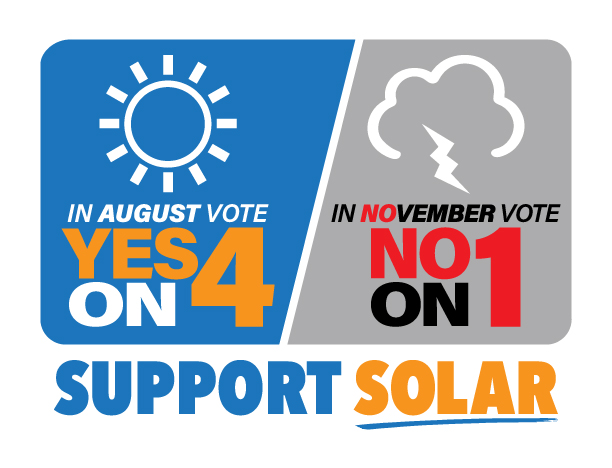
Rooftop solar is a benefit to ratepayers and utilities

While all eyes are on the 2016 Presidential election, the ballot on November and the primary in August will contain two amendments vital to the future of Florida.
The utilities mounted a slick advertising campaign, and paid an army of canvassers around the state to place an amendment on the November ballot that appears to be pro-solar, but which is anything but. Essentially, the amendment gives utilities the ability to regulate rooftop solar, which is like giving the fox the keys to the henhouse.
In other states, and even within Florida, utilities don’t view solar as a threat, and in these areas, like Orlando, the utilities actually add value to the distributed energy rooftop solar provides. FPL and JEA fall on the opposite end of that spectrum, and have worked vigorously to thwart the growth of residential rooftop solar in their service areas. The most common argument they use is that rooftop solar customers are subsidized by non-solar customers, going so far as to frame the issue in terms of class warfare and making the argument that solar is something that only elites can afford, and that those people are taking advantage of the poor. This is absurd. A recent article by the Brookings Institution, a non-partisan think-tank with a sterling reputation weighed in on this issue, and dismantled the argument made by utilities.
Findings from the Brookings Institution
Mark Muro, a Senior Fellow and Policy Director published an article in May which punches huge holes in the arguments that JEA and FPL propagate. He looked at studies performed by utilities around the country, and by Public Utilities Commissions (which regulate utilities) and combined the literature. Here is the central finding of Mr. Muro’s research:
“So, what does the accumulated nation literature on costs and benefits of net metering say? Increasingly it concludes—whether conducted by PCUs, national labs, or academics—that the economic benefits of net metering actually outweigh the costs and impose no significant cost increase for non-solar customers. Far from a net cost, net metering is in most cases a net benefit—for the utility and for non-solar rate payers.”
Utilities: The old business model must change
Our utilities are grappling with how to adapt to the changing and evolving energy landscape. The utilities that view distributed rooftop solar as a threat are looking at flat revenues and concluding that one way to solve that problem is by hitting solar customers with monthly charges and decreasing the buy-back rates. This is not the solution, and many utilities, states, and Public Utilities Commissions are reaching the same conclusion.
In Florida the discussion is clouded by the fact that the PUC is essentially in the pockets of the utilities themselves. Unless the utilities alter their way of thinking, embracing, rather than fighting residential rooftop solar, the issue will persist.
The fact is, net metering allows utilities the ability to sell clean energy to their customers without investing any money in infrastructure. Homeowners themselves are paying for the array and installation. Solar installations make expensive grid upgrades unnecessary, saving the utilities millions. Solar takes pressure off oil and gas generation at peak demand times, and lowers rates.
In 2014, Minnesota’s Public Utility Commission found that the value of solar was 3 to 3.5 cents more per kilowatt hour than the retail rates, when the cost of carbon and avoided costs of new power plants and gird upgrades was factored in.
Part of the problem in Florida is that the utilities increase revenue and profits by implementing costly infrastructure upgrades, so they tend not to factor these savings in when looking at rates for solar.
The solution is that the utilities themselves evolve and view themselves as distributors of energy, rather than the sole providers of power. This challenges the entrenched mindset that the utility should have a monopoly on generation. Only by looking at the available research and concluding that they’ve got to change their practices and overall outlook will this perception change.
What Can We Do?
- Vote yes in August, and no in November.
- Call your city-councilman.
- Call your Congressman.
- Talk to your neighbors, and put out a yard sign.
Eventually, utilities, even in Florida, will embrace the spread of rooftop solar, it’s just a matter of time. They cannot stop the future, and solar is the future, here in the Sunshine State.
So how much does it cost?

Pitfalls of online solar calculators.
Solar power is experiencing tremendous growth in Northeast Florida, and A1A Solar recently earned one of the top spots on Jacksonville Business Journal’s list of the fifty fastest growing companies in the city. The surge of interest in rooftop solar over recent years has given rise to a bewildering variety of online solar calculators.
How do they work?
Most online solar calculators are generic, and come up with an estimate without enough data to make the numbers relevant. A homeowner inputs an address and average monthly utility bill, and the calculator spits out a dollar amount along with the number of panels it will take to offset the electric bill.
Relying on one of these calculators for a realistic estimate is like going to Web MD for a serious medical diagnosis. There are too many variables unique to each home which makes these calculators absurdly unreliable. We have experimented with them, inputting our own homes into the calculators, and have yet to find one which is on the money.
What are the variables?
- Utility rates: Rates vary, and unless you know exactly what you are paying per-kilowatt hour, the financial side is going to be completely skewed from the beginning.
- Weather patterns: Some calculators do factor in weather. Cloud cover impacts solar production, and the best online calculators will account for historic weather patterns when arriving at an estimate.
- Shade: Shade has a direct impact on solar production, so knowing how much loss your system will or will not experience due to shading is of vital importance. Most online calculators do not factor in shade at all. Even the ones that do rely on out of date satellite photos, so if a tree has been removed or has grown over the last 5 years, the calculator does not acknowledge the difference.
- Roof: Most online calculators won’t recognize the slope of your roof or any restrictions like shading from chimneys, penetrations by vents, or offsets from the roof. It’s also important to know the type of roof you have. A metal roof requires a different fastening system than a traditional shingled roof. How old is your roof? If you are planning on replacing it within the next few years, you may qualify for a tax credit on the roof if you go solar. The calculator does not know this information.
- Electric panel: Depending on the size of the array you need, an electric panel upgrade may be required. There is no way for the online calculator to calculate this.
- Efficiency measures: If you are a candidate for a hybrid-electric hot water heater, this can offset over ten percent of your usage. The calculator won’t recognize this.
- Historic usage: In Florida, our usage tends to spike during the summer months. When most homeowners use an online calculator, they don’t use an exact number of kilowatt hours used for the year, but instead input a price range for their bill. This creates a great gap between actual usage and the estimated number of panels required to offset the bill over the course of the entire year. The number may be a gross underestimate, or it may swing the other way, depending on the bill amount you use. Either way, it won’t be accurate.
So, how much does it cost?
Even if you are only looking for a ball-park estimate, the only way to answer this question is to sit down with one of our solar consultants. They look for the variables listed above, and have your best interest at heart. Your consultant will design a system just for you and give you an honest price. Each home is different, and each client’s needs vary. You will receive not a ball-park estimate, but rather an exact price. You will also see the return on your investment in terms of monthly cash flow, the increase in value to your home, and the cost-avoidance over time.Your consultant will answer any questions you have, show you how solar works and how much you will save over the lifetime of the system. Each array is designed and integrated individually for every homeowner. Consults are free, and you are under no obligation.



